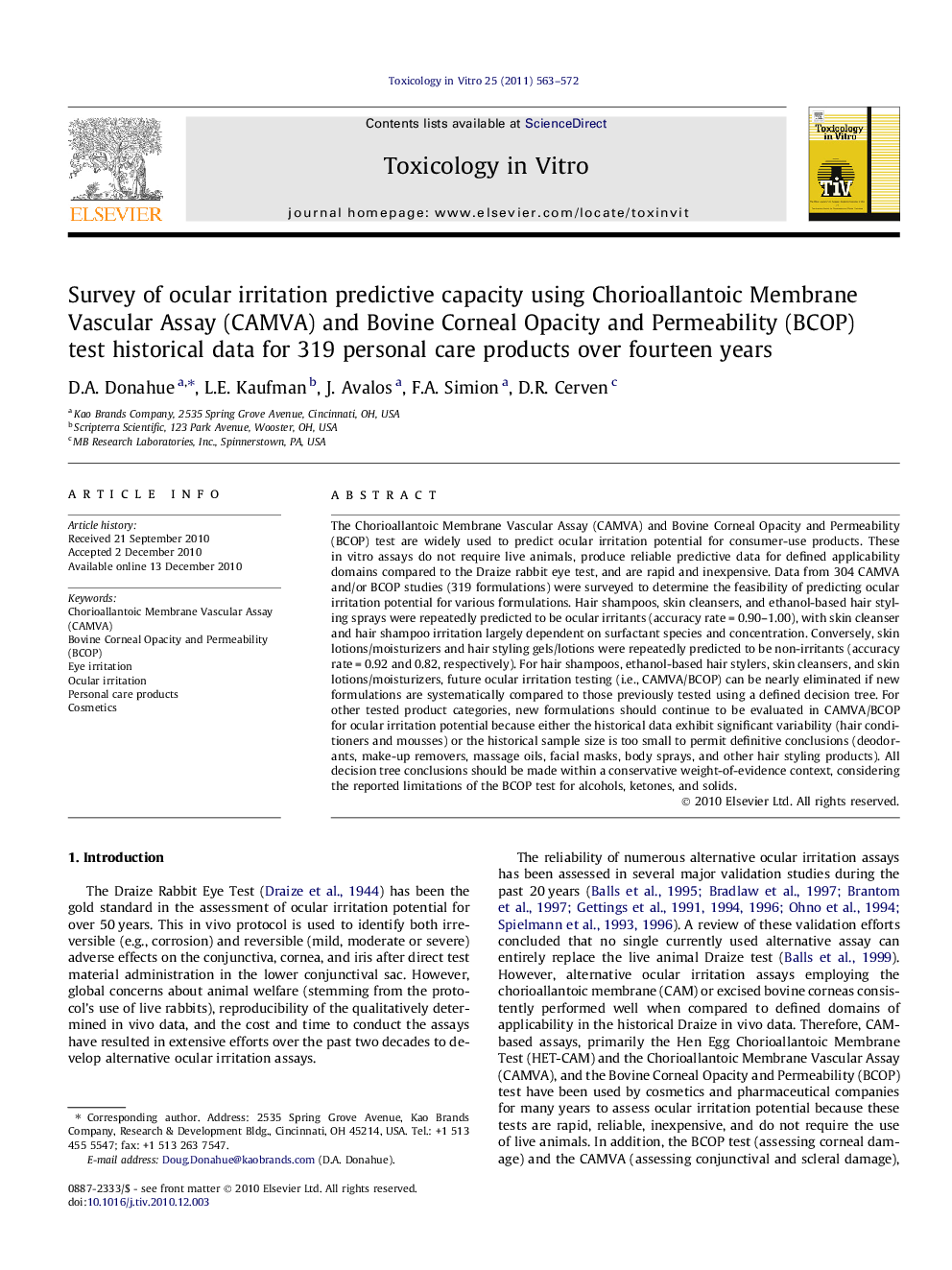| Article ID | Journal | Published Year | Pages | File Type |
|---|---|---|---|---|
| 5863127 | Toxicology in Vitro | 2011 | 10 Pages |
Abstract
The Chorioallantoic Membrane Vascular Assay (CAMVA) and Bovine Corneal Opacity and Permeability (BCOP) test are widely used to predict ocular irritation potential for consumer-use products. These in vitro assays do not require live animals, produce reliable predictive data for defined applicability domains compared to the Draize rabbit eye test, and are rapid and inexpensive. Data from 304 CAMVA and/or BCOP studies (319 formulations) were surveyed to determine the feasibility of predicting ocular irritation potential for various formulations. Hair shampoos, skin cleansers, and ethanol-based hair styling sprays were repeatedly predicted to be ocular irritants (accuracy rate = 0.90-1.00), with skin cleanser and hair shampoo irritation largely dependent on surfactant species and concentration. Conversely, skin lotions/moisturizers and hair styling gels/lotions were repeatedly predicted to be non-irritants (accuracy rate = 0.92 and 0.82, respectively). For hair shampoos, ethanol-based hair stylers, skin cleansers, and skin lotions/moisturizers, future ocular irritation testing (i.e., CAMVA/BCOP) can be nearly eliminated if new formulations are systematically compared to those previously tested using a defined decision tree. For other tested product categories, new formulations should continue to be evaluated in CAMVA/BCOP for ocular irritation potential because either the historical data exhibit significant variability (hair conditioners and mousses) or the historical sample size is too small to permit definitive conclusions (deodorants, make-up removers, massage oils, facial masks, body sprays, and other hair styling products). All decision tree conclusions should be made within a conservative weight-of-evidence context, considering the reported limitations of the BCOP test for alcohols, ketones, and solids.
Related Topics
Life Sciences
Environmental Science
Health, Toxicology and Mutagenesis
Authors
D.A. Donahue, L.E. Kaufman, J. Avalos, F.A. Simion, D.R. Cerven,
